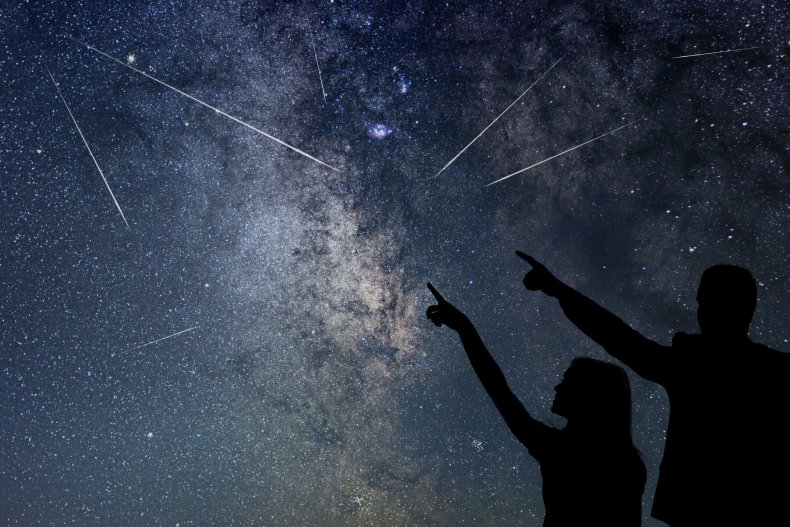How, When and Where to see the Arietid Daytime Meteor Shower This Week
Meteor enthusiasts may be able to catch fleeting glimpses of the daytime Arietid meteor shower this week—the strongest daytime shower of the year.
The Arietids occur every year in early June, causing thousands of meteors to streak across the sky. The problem, though, is that the sun is usually up when the shower is at its most intense. This is because the shower’s radiant point—the location in the sky from which the meteors appear to come—lies just 30 degrees from the sun.
That means that the shower is mostly invisible. However, it should be possible to catch some shooting stars caused by the Arietid shower by getting up before dawn when the sun isn’t in the sky. This is because the shower’s radiant point rises in the east about an hour before the sun does.
According to astronomy website SpaceWeather.com, these pre-dawn Arietids are often “Earthgrazer”-type meteors that are slow and bright. That said, it might be difficult to see any.
At the pre-dawn viewing hour, the meteor shower’s rates aren’t expected to be very high. The American Meteor Society states that current rates are expected to be about one meteor per hour with a medium entry velocity—though this may be as high as six per hour as seen from rural sites in the mid-northern hemisphere.
In tropical southern latitudes, the morning rate may be closer to 10 meteors per hour from rural sites.
The upside is that if a certain morning doesn’t provide much of a display, the shower should be active throughout the first and second weeks of June. There are conflicting reports about the date of the exact peak.
Astronomy website EarthSky states that the peak will come on June 7, while the American Meteor Society states that the peak passed on June 4.
In any case, pre-dawn observers can try facing east and watching for meteors moving away from the radiant.
Meteor showers occur when the Earth passes through a cloud of debris left behind by a comet. Pieces of this debris can enter Earth’s atmosphere extremely quickly, causing them to heat up and shine as they streak across the sky. Since scientists can work out the orbits of comets, they can predict when meteor showers will happen. Many take place around the same time every year.
It’s still uncertain which comet is responsible for the Arietid meteor shower. However, it’s thought that the shower might be caused by the comet 96P/Machholz, which was discovered in 1986. Others think it might come from an asteroid known as 1566 Icarus.

Allexxandar/Getty
Read More: How, When and Where to see the Arietid Daytime Meteor Shower This Week

